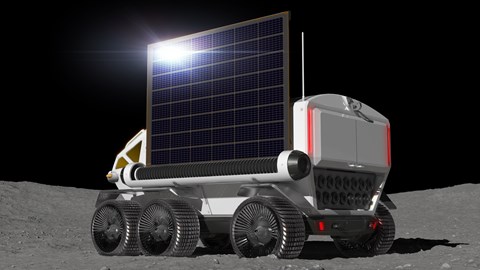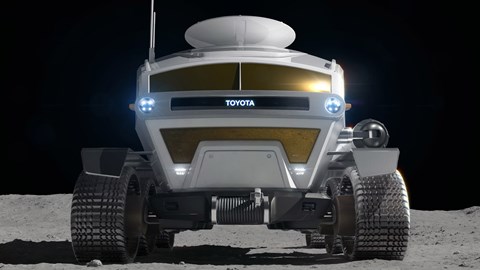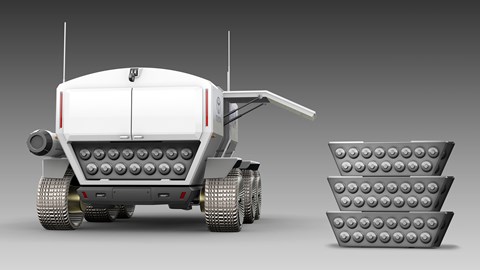► Should launch in 2029
► Likely to use fuel cell power
► Range needs to be 10000km (6214 miles)
Toyota has announced a new car – and no, it’s not a new derivative of the new Supra. In fact, the new vehicle is manned, pressurised lunar rover, which Toyota says will be powered using ‘fuel cell and electric vehicle technologies.’ So a bit like a Prius or Mirai, but in space. It’s actually the first product of new agreement announced today between Toyota and the Japan Aerospace Exploration Agency (JAXA).
‘Manned rovers with pressurised cabins are an element that will play an important role in fully fledged exploration and use of the lunar surface,’ said JAXA president Hiroshi Yamakawa. ‘Through our joint studies, we would like to put Toyota’s excellent technological abilities related to mobility to use. We look forward to the acceleration of our technological studies for the realisation of a manned, pressurised rover.’

‘As an engineer, there is no greater joy than being able to participate in such a lunar project by way of Toyota’s car-making,’ said Toyota executive vice president Shigeki Terashi. ‘Furthermore, by way of our technologies related to electrified vehicles, such as fuel cell batteries and our technologies related to autonomous and automated driving.’
According to JAXA, the project has been ongoing since May 2018, and ithopes to use launch the rover into space in 2029 – so there could be a GR version of the rover by then.

The first Mirai on the moon
As you’d expect, range and power density is an issue on the Moon as well as Earth. Range for the pressurised-rover will need to hit over 10000km (6214 miles), and it looks as though Toyota is looking to fuel cell tech to achieve those numbers.
‘Fuel cells, which use clean power-generation methods, emit only water, and, because of their high energy density, can provide a lot of energy, making them especially suited for the project being discussed with JAXA,’ added Terashi.

Range isn’t the only problem though, as the lunar surface isn’t exactly flat. That means the rover will need to be robust, too: ‘The moon has a complex terrain with craters, cliffs, and hills,’ Waka added. ‘Moreover, it is exposed to radiation and temperature conditions that are much harsher than those on Earth, as well as an ultra-high vacuum environment.’
We’ll update this article when we’re a little closer to launch.